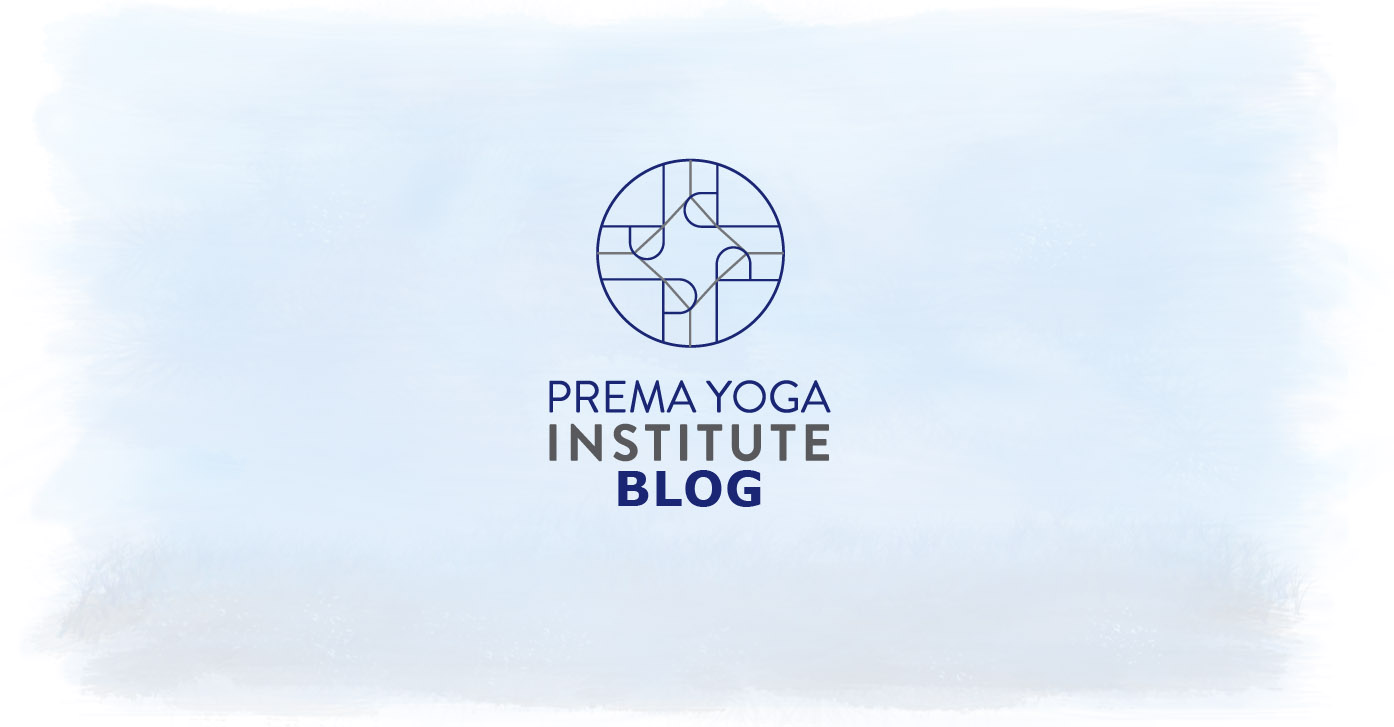
Exploring the Koshas: How Yoga Therapy Promotes Holistic Wellness
The Pancha Maya Kosha system is the primary model used in the holistic assessment and application of yoga therapy. In this blog, we’ll discuss the Kosha system, explore the Koshas, and why it’s considered a holistic health model.
What is the Kosha System?
When talking about origins, the Kosha systems comes from the Taittiriya Upanishad, which translates as the following:
Pancha means five.
Maya means illusion, or that which has a relative reality.
Kosa means sheath, cell, envelope, container, treasure or a bud of a flower (that can reveal itself).
Since the Kosas or sheaths are interrelated, they affect each other. Any professional who has undergone yoga therapist certification understands that you must work holistically. Yoga means union - and therefore you address the body and the mind. You should be able to think holistically and proceed mindfully aware of the person you’re helping.
The Five Koshas
There are five sheaths in the Pancha Maya Kosha system. To understand how this system promotes holistic wellness, let’s thoroughly discuss each of the five koshas.
https://www.himalayanyogaashram.com/blog/2019/05/11/the-five-koshas/
Annamaya Kosha - Food Body
This kosha is our perception of our physical body. This comprises what we eat, which is why it’s known as the food sheath.
In most cases, this is also where a student notices an imbalance first. For instance, if the student pulls a muscle in a sport, it doesn’t only affect the body but it also affects the other mental koshas.
Licensed yoga practitioners typically regulate the annamaya kosha first through Classical Hatha, Iyengar yoga, and Ayurvedic practices first before tackling the mental sheaths.
Pranamaya Kosha - Breath Body
The next kosha is our energetic body as well as our breath. It’s the bridge between the body and the mind. As such, it’s also a useful link between physiological and psychological processes, aside from being an entry point for examination or assessment.
The chakras, nadis, and vayus are maps that explore pranamaya.
Manomaya Kosha - Mind Body
This kosha is fed by our senses. It’s also cognitive in nature. Manomaya encompasses our thoughts, beliefs, emotions, as well as our sense of individuality (Sullivan & Hyland Robertson, pg. 90).
At this level, it’s important to modify our mental habits, or at times even intercept them, before tuning into our higher self. For instance, when a person keeps poor company, they are preventing themselves from nurturing good friendships.
Appropriate practices such as chanting and Yoga Nidra can help address manomaya kosha.
Vijnanamaya Kosha - Wisdom Body
This kosha, as per Sullivan & Hyland Robertson, is composed of faith, righteousness, meditation, truth, and detachment. The wisdom body also is capable of motivating us from either our conscious or subconscious level of knowledge.
Some practices to address this kosha are meditation and discernment.
Anandamaya Kosha - Bliss Body
This kosha is a person’s ability to access their inherent positive qualities and integrate such qualities into daily living. It’s also sometimes said to contain a person’s karma, so it’s also referred to as the causal body. According to Kamini Desai, Ph.D., the bliss body is the final veil to ultimate reality or self. This kosha allows the melding of the “I” into the whole.
Are you a yoga teacher looking to advance your therapeutic knowledge and practice? Check out our Yoga Alliance 300, Continuing Education Courses, and IAYT-Certified Yoga Therapy Certification Program at PYI.
Aspects of Sound Healing: Toning, Deep Listening and Freeing the Natural Voice
The integration of sound into yoga practice is not just an enhancement of the physical experience, but a profound method of healing and transformation. Teaching yoga with a focus on sound healing elements, like toning, deep listening, and freeing the natural voice, opens up a new dimension of yoga therapy. This article explores these aspects, highlighting the importance of sound in yoga teacher training and yoga therapy online training programs.
The Power of Intention in Sound Healing
Intention is a fundamental component in sound healing. As noted by Steven Halpern, PhD, and sound healer, sound acts as a “carrier wave of consciousness.” Jonathan Goldman simplifies this concept with his formula: Frequency + Intention = Healing. This implies that a pure intention combined with a pure tone creates the right conditions for healing and transformation.
Toning and Its Benefits
Toning, a practice involving the creation of extended vocal sounds, has numerous benefits. It helps in releasing tension, centering the mind, lowering blood pressure, and stimulating bone conduction.
In yoga, just as āsana creates shapes with the body, toning creates shapes with the mouth, resonating within the body and affecting our physical, mental, and energetic states. “Tone is carried through the air to our ears, but it is the etheric which carries the real essence of the tone to our inner being,” Rudolf Steiner emphasized the spiritual connection toning provides, uniting us with our origins and involving our entire being in the process.
Sound and the Energetic Body
In yoga, bījas or seed syllables are used to move energy and tune our chakras. Each chakra has a corresponding seed syllable, such as LAM for the Muladhara / Root chakra or AUM for the Ajna / Third-eye chakra. These syllables are powerful tools in sound yoga therapy, impacting the energetic body and facilitating divine connection.
Tuning Forks in Sound Healing
Tuning forks, as explained by John Beaulieu, PhD, are tools in sound healing that induce a ‘still point,’ aiding in mental and physical pattern shifts. Beaulieu’s forks with overtones are particularly effective, aligning with the concept of entrainment where brain waves sync with sound waves.
https://solancha.com/understanding-sound-therapy-and-its-healing-effect/
Freeing the Natural Voice
The voice is more than a mere sound; it’s an expression of the soul. Hazrat Inayat Khan and Tom Kenyon emphasize the profound connection between voice, breath, and life. In yoga practices, like sound meditation or sound yoga therapy, using our voice helps in expanding breath capacity, releasing nitric oxide, and connecting with our inner selves. Regular vocal practice can lead to significant healing and unification of body, mind, and spirit.
Creating Your Own Sound Practice
To integrate sound healing into yoga practice, one can create a sacred “sound temple,” a space free from distractions where one can explore different sounds and mantras. This includes using drones and various sound entry points to achieve clarity and purification. This approach aligns with the teachings of Silvia Nakkach, “find ways to help you soften the mind and open you to divine intervention”. Focus on softening the mind and opening up to divine intervention.
The Practice of Deep Listening
Deep Listening, a concept developed by Pauline Oliveros, is about being fully present and attentive to all sounds, distinguishing between hearing and listening. This practice, which can be further explored at https://www.deeplistening.org/, emphasizes the importance of silence and attentiveness for internal and external healing.
Medicine Melodies
Medicine melodies are intuitive sounds that reflect a sacred unity with nature. They appear in various traditions as lullabies, chants, mantras, and healing songs. Engaging in deep listening allows individuals to tap into these melodies, transforming them into vehicles for healing and spiritual connection, as explained by Silvia Nakkach.
Integrating Sound into Yoga Accreditation and Training
Incorporating these elements into yoga teacher training and yoga accreditation programs is essential. It expands the scope of yoga from being merely a physical practice to a holistic healing approach. As yoga therapy online training becomes more prevalent, including sound therapy elements like sound meditation and sound yoga therapy enriches the learning experience, equipping future yoga teachers with a comprehensive understanding of yoga’s healing potential.
The Bottom Line
The fusion of sound healing techniques with traditional yoga practices offers a multifaceted approach to wellness. It’s not just about teaching yoga; it’s about imparting a deeper understanding of how sound can be used as a powerful tool for healing, transformation, and spiritual connection. As the field of yoga continues to evolve, incorporating sound healing principles will undoubtedly become an integral part of yoga teacher training and therapy programs, enriching the practice for both teachers and students alike.
Interested in sound yoga, sound healing and in learning how to incorporate sound into your yoga practice or profession? Join Jessica Caplan, Dana Slamp and more this spring – live and online – for Sound Yoga Therapy. CE’s with Yoga Alliance and credit towards our Yoga Therapy Certification. Call us at Prema Yoga Institute and advance your yoga teaching career today!
About Jessica Caplan
Jessica Caplan, an E-RYT200 certified yoga instructor and integrative Sound Practitioner, began her journey in yoga in 2006 with Pure Yoga Hong Kong’s teacher training. Specializing in sound therapy, she trained at the Open Center’s Sound and Music Institute under renowned experts. Jessica skillfully integrates soundbaths, meditative soundscapes, and voice and sound healing workshops into her practice. She co-created the audio meditation series SoundMind and co-teaches PYI’s signature course, Sound Yoga Therapy every spring online at Prema Yoga Institute. Jessica’s work, deeply rooted in a blend of yoga, sound healing, and various spiritual traditions, is accessible at www.jessicacaplanyoga.com.
The Power of Sound Yoga & Sound Healing: A Comprehensive Guide
In the quest for holistic wellness, the ancient wisdom of sound healing has gained remarkable traction, especially in the realms of yoga therapy. The idea that “By His utterance came the universe,” as stated in the Bṛhadāraṇyaka Upaniṣad around 700 BCE, underscores the profound impact of sound on the cosmos and human existence.
The Universal Language of Sound
The concept of the universe originating from sound is not unique to one tradition. Shaivism teaches that the universe began with the sound अ, a primal note in Sanskrit associated with Shiva. Similarly, in Jewish mysticism’s Sefer Yetzirah, creation is depicted as a process initiated through letters, akin to sounds. This notion parallels the scientific perspective of the “Big Bang,” suggesting a sound at the universe’s inception. In Abrahamic traditions, sound plays a pivotal role in creation narratives, with the divine command “Let there be light” bringing forth existence.
Albert Einstein’s theory that all matter breaks down into energy, vibrating constantly, further supports this idea. As particle physicist Don Lincoln notes, “the thing that we visualize as a particle is just a localized vibration of that field.” This insight into the nature of sound as organized vibration reveals its potential to influence matter.
The Philosophical Foundations
Samkhya philosophy concurs with the idea that the universe is a manifestation of sound, or vak. This sound relates to ether or space (आकाश ākāśa), the most subtle of the five elements. The path of creation in yogic theory moves from the subtle (ether) to the gross (physical elements), corresponding to the chakras in Tantra and doshas in Āyurveda.
The Science of Sound in Yoga and Therapy
Sound’s dual nature to heal and harm is significant in yoga and therapy. It can organize neural activity and positively stimulate our bodies, reducing stress and boosting immunity. Conversely, it can increase blood pressure and disturb sleep. The principle of entrainment, discovered by Christian Huygens, demonstrates how external rhythms, like music, can synchronize and modify our internal states, such as brain waves and emotions.
Entrainment explains how certain sounds and rhythms can change brain waves.
Sensing and Responding to Sound
Sound begins to impact us even before birth. Fetuses respond to external sounds and distinguish between novel and familiar ones, a precursor to learning. The mechanics of hearing are complex, involving the transmission of sound waves through the ear to the brain, where they’re processed in various regions responsible for different aspects of auditory perception.
Dr. Tomatis, an influential figure in psychoacoustics, highlighted that sounds fuel our brain, with high-frequency sounds being particularly effective. He also discovered the role of bone conduction in hearing and the stimulation of the vestibular system, which affects our sense of balance and spatial orientation.
The Therapeutic Power of Sound
The concept of Nitric Oxide (NO) in our bodies, a gas molecule crucial to our organ systems, illustrates the physiological impact of sound. Stress reduces NO production, while its release induces relaxation. Humming, for instance, significantly increases nasal NO, demonstrating the physical benefits of sound practices.
Sound Healing in Practice
The foundation of sound healing lies in the belief that everything, including our body and energetic centers, has a unique resonance. When parts of our body are unwell or stressed, they fall out of their optimal vibrational state. Sound healing employs sympathetic vibrations to realign our body to its natural, harmonious state.
This idea is not new; it has roots in various traditions such as the Hindu/Nada yoga and the Greek practice of using music for emotional and psychic healing. Modern scientific research supports the healing capacity of sound and music, further validating its use in various therapeutic contexts, including sound yoga and yoga therapy.
Sound Yoga Therapy: A Path to Wellness
In the realm of yoga accreditation and yoga teacher training, the inclusion of sound yoga therapy and sound meditation is increasingly prevalent. These practices integrate the transformative power of sound into the yogic journey, offering a path to holistic wellness that resonates with our very essence.
Through sound yoga therapy and sound meditation, practitioners can experience profound shifts in their physical, mental, and emotional states. As they harmonize their inner vibrations with the external world, they embark on a journey of self-discovery and healing that transcends conventional yoga practices.
Final Thoughts
Sound yoga and sound healing represent a fusion of ancient wisdom and modern scientific understanding, offering powerful tools for transformation and healing. As we continue to explore these practices, we uncover the immense potential of sound to harmonize our inner and outer worlds, leading us toward a deeper sense of wellness and unity with the universe.
Interested in sound yoga, sound healing and in learning how to incorporate sound into your yoga practice or profession? Join Jessica Caplan, Dana Slamp and more this spring – live and online – for Sound Yoga Therapy. CE’s with Yoga Alliance and credit towards our Yoga Therapy Certification. Call us at Prema Yoga Institute and advance your yoga teaching career today!
















